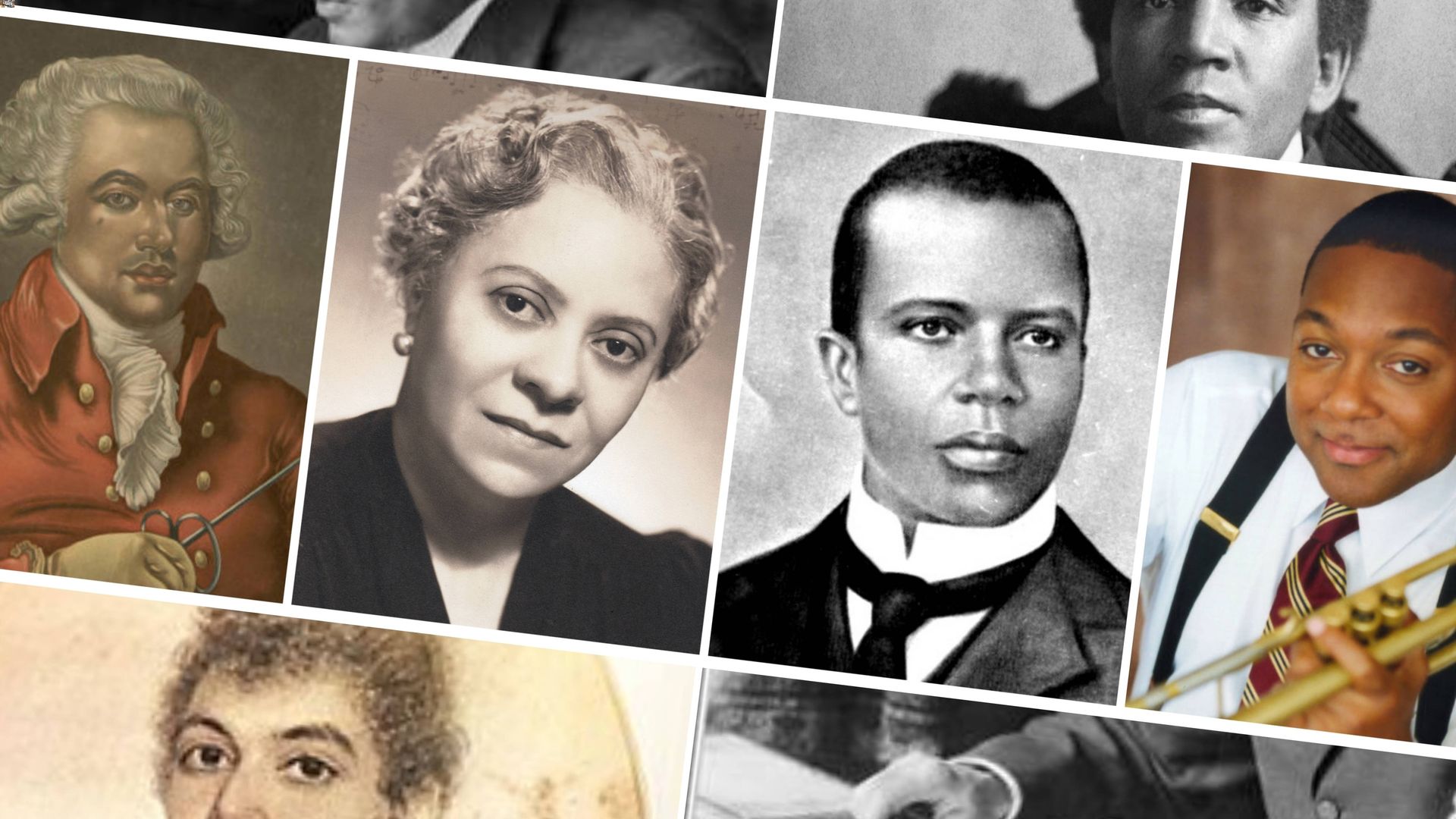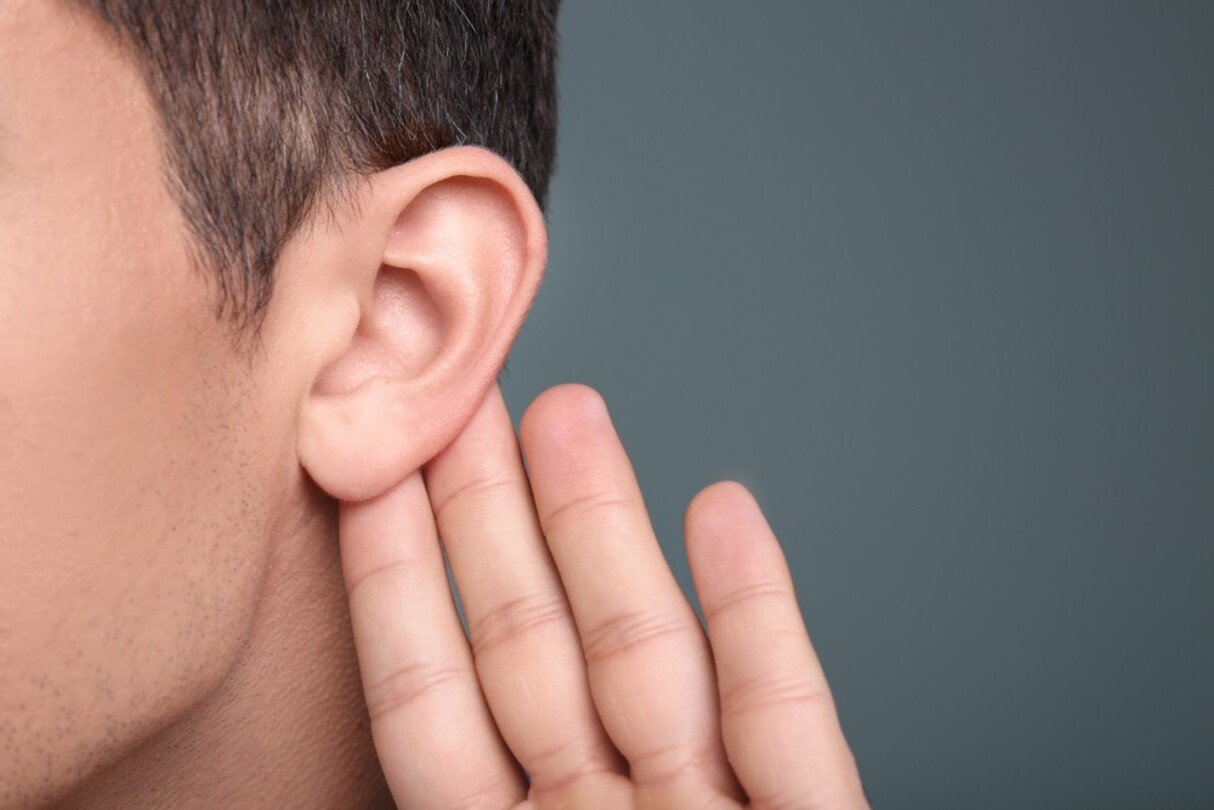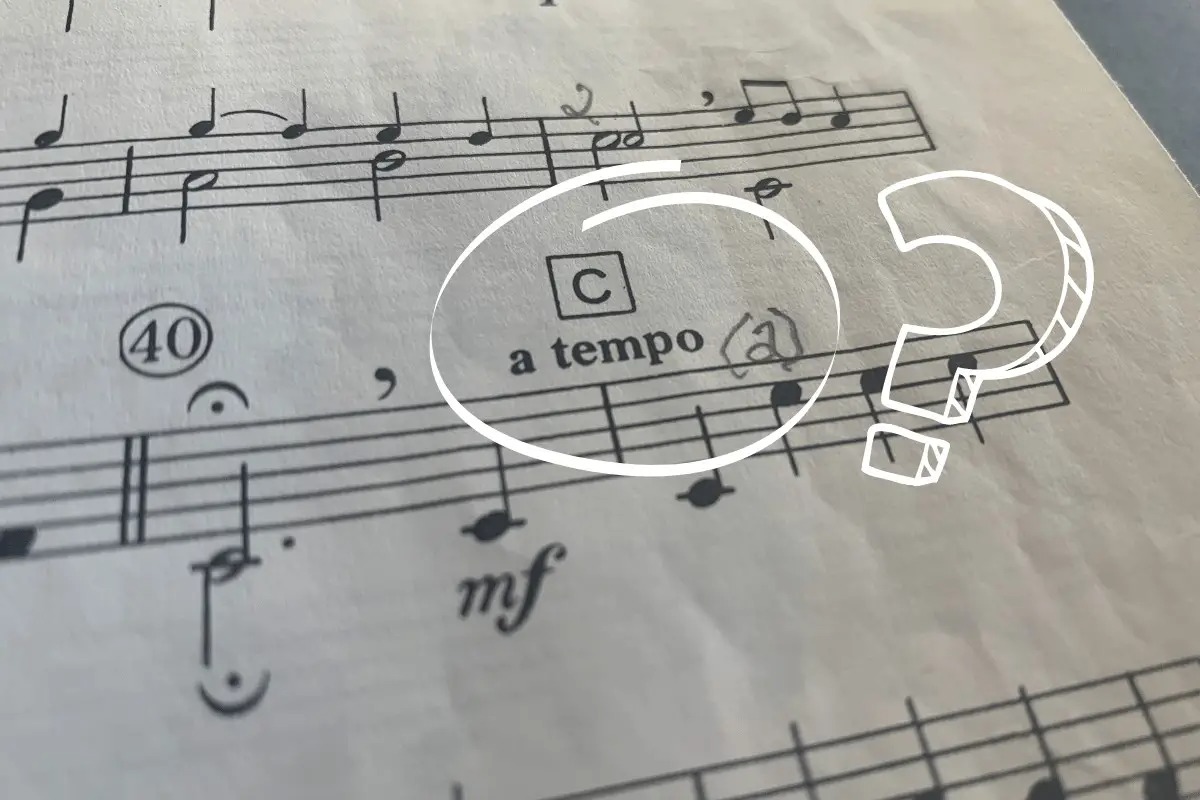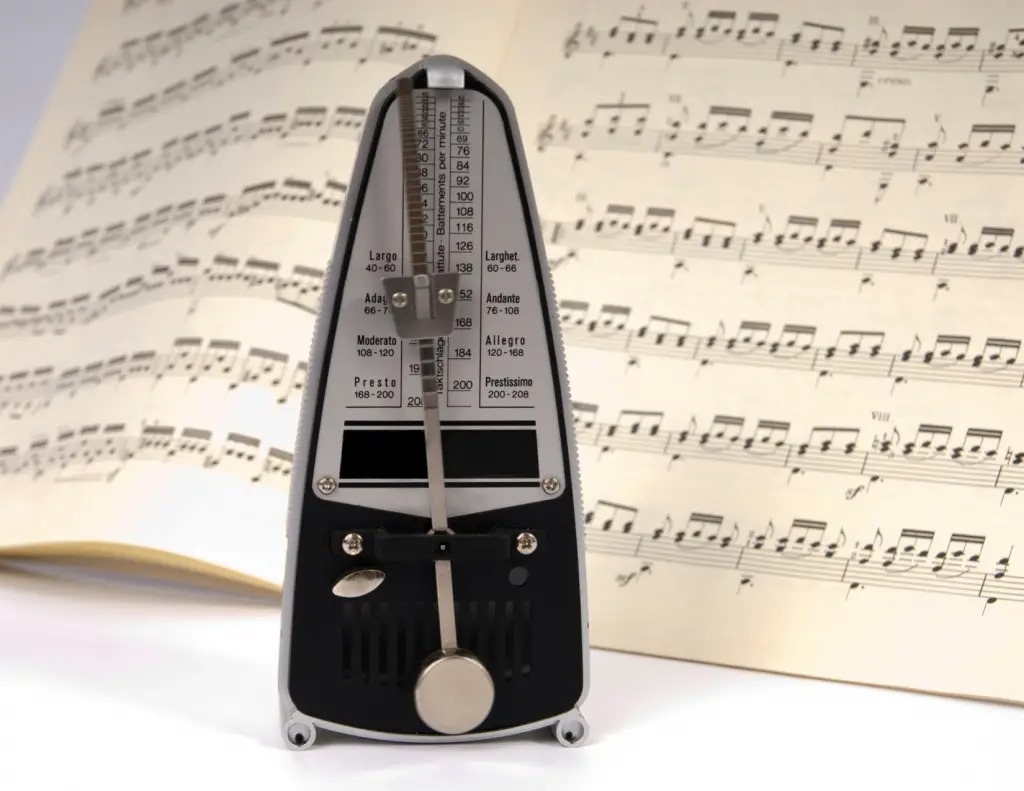Home>Production & Technology>Tempo>How Tempo In Music Affects The Human Brain


Tempo
How Tempo In Music Affects The Human Brain
Modified: January 22, 2024
Discover the fascinating connection between tempo in music and the human brain. Explore how different tempos impact mood, cognition, and emotional response, unlocking the power of tempo for a transformative musical experience.
(Many of the links in this article redirect to a specific reviewed product. Your purchase of these products through affiliate links helps to generate commission for AudioLover.com, at no extra cost. Learn more)
Table of Contents
Introduction
Music has always had a profound impact on the human experience, evoking emotions and capturing the essence of diverse moments in life. One key element of music that plays a crucial role in shaping our response to it is tempo. Tempo refers to the speed or pace at which a piece of music is performed, and it has the power to greatly influence our mood, cognition, and even physical movements.
In this article, we will delve into the fascinating world of tempo in music and explore how it affects the human brain. We will uncover the science behind tempo and examine the connection between tempo and human brain activity. Furthermore, we will explore the effects of both fast and slow tempos on the brain, as well as the emotional and cognitive responses they elicit.
Understanding the influence of tempo on the brain can provide valuable insights into how music can be used therapeutically, enhance productivity, and even improve our overall well-being. Whether you are a music enthusiast or simply curious about the wonders of the human brain, this article will shed light on the profound impact that tempo in music can have on our minds and bodies.
The Science Behind Tempo in Music
Tempo is a fundamental element of music that is closely tied to rhythm. It refers to the speed or pace at which a piece of music is played, and it is typically measured in beats per minute (BPM). Tempo plays a crucial role in setting the mood and energy level of a musical composition, and it can vary widely across different genres and styles of music.
The perception of tempo is primarily processed in the auditory cortex of the brain, which is responsible for interpreting and analyzing sound. When we listen to music, our brains become attuned to the rhythm and tempo of the piece, allowing us to synchronize our movements and emotions with the music. This synchronization occurs through a complex network of neural pathways that involve various regions of the brain.
Research has shown that the brain has a natural preference for certain tempos, which can be influenced by cultural factors and personal experiences. For example, fast-paced music with a higher BPM often elicits feelings of excitement, energy, and even tension. On the other hand, slow-paced music with a lower BPM tends to evoke a sense of relaxation, calmness, and introspection.
The perception and interpretation of tempo in music are not limited to the auditory cortex alone. Studies have revealed that other regions of the brain, such as the prefrontal cortex and the limbic system, also play significant roles in processing tempo and generating emotional responses. These regions interact with each other to create a holistic experience of music that engages both our cognitive and emotional faculties.
It is worth noting that tempo alone is not the sole determinant of a song’s emotional impact. Factors such as melody, harmony, lyrics, and personal associations with the music also contribute to our emotional response. However, tempo serves as a powerful tool in shaping the overall emotional landscape of a composition.
In the next sections, we will explore in more depth how the tempo of music affects specific aspects of human brain activity, including emotional responses, cognitive function, motor skills, and memory. By diving into these fascinating connections, we can gain a deeper understanding of the profound influence that tempo has on our minds and bodies.
The Connection Between Tempo and Human Brain Activity
Tempo in music has a direct impact on human brain activity. When we listen to music with different tempos, our brains respond by producing different patterns of neural activity, which in turn influence our emotions, cognition, and even physical movements.
Studies using neuroimaging techniques such as functional magnetic resonance imaging (fMRI) have provided insights into the neural mechanisms that underlie our response to tempo. These studies have shown that different tempos activate distinct brain regions and networks.
For example, research has demonstrated that listening to music with a fast tempo leads to increased activation of the amygdala, a part of the brain responsible for processing emotions. This suggests that fast-paced music can elicit strong emotional responses, such as excitement or arousal. On the other hand, slow-tempo music has been found to activate regions associated with relaxation and introspection, such as the medial prefrontal cortex.
Furthermore, the tempo of music can also influence the release of neurotransmitters in the brain, such as dopamine and serotonin, which are involved in regulating mood and emotions. Fast-paced, upbeat music has been shown to increase the release of dopamine, leading to feelings of pleasure and motivation. On the contrary, slow, calm music can promote the release of serotonin, inducing a sense of calm and relaxation.
In addition to emotional responses, tempo can also affect cognitive function. Research has found that listening to music with a fast tempo can enhance attention, memory, and cognitive processing speed. The rhythmic patterns and temporal structure of music can help synchronize neural firing in the brain, improving cognitive performance and efficiency.
The effect of tempo extends beyond just listening to music, as it can also influence our physical movements. When we hear music with a particular tempo, our bodies naturally want to synchronize with the rhythm. This phenomenon, known as entrainment, is evident in activities like dancing or tapping our feet to the beat of a song. The tempo of the music acts as a cue for our motor system, influencing our movements and facilitating coordination.
Overall, the connection between tempo and human brain activity highlights the intricate relationship between music and the brain. By understanding how different tempos affect our emotions, cognition, and physical movements, we can harness the power of music to optimize our well-being, enhance productivity, and even facilitate therapy for neurological conditions.
Effects of Fast Tempo on the Brain
Listening to music with a fast tempo can have profound effects on the human brain. The energetic and dynamic nature of fast-paced music can trigger a cascade of neural responses that affect our emotions, cognition, and physical state.
One of the immediate effects of fast tempo music is increased arousal and heightened emotional response. The rapid beats and energetic rhythms stimulate the amygdala, the brain region responsible for processing emotions. This can lead to feelings of excitement, exhilaration, and even tension. Fast tempo music has been found to activate the release of dopamine, a neurotransmitter associated with pleasure and reward, further enhancing the emotional experience.
Fast-paced music can also have an impact on cognitive function. Research has shown that listening to music with a fast tempo can improve attention and cognitive processing speed. The rhythmic patterns and quick tempo of the music help synchronize neural firing in the brain, leading to enhanced focus and mental agility. This can be particularly beneficial in tasks requiring concentration and productivity.
Furthermore, fast tempo music can also have an influence on our physical state and motor skills. The quick rhythm and energetic beats can prompt us to move and dance in sync with the music. This synchronization, known as entrainment, can enhance coordination, rhythm perception, and even motor learning. It can also boost our energy levels and contribute to a sense of vitality and motivation.
It is important to note that the effects of fast tempo music can vary depending on individual preferences and cultural factors. Some individuals may find fast-paced music overwhelming or anxiety-inducing, while others may find it invigorating and uplifting. It is essential to consider personal preferences and comfort levels when selecting and engaging with fast tempo music.
Overall, the effects of fast tempo music on the brain demonstrate the power of music to evoke intense emotional responses, enhance cognitive function, and stimulate physical activity. By understanding and leveraging the impact of fast tempo music, we can harness its potential to boost mood, increase productivity, and foster a sense of vitality in our daily lives.
Effects of Slow Tempo on the Brain
Listening to music with a slow tempo can have profound effects on the human brain. The relaxed and gentle nature of slow-paced music can elicit a cascade of neural responses that affect our emotions, cognition, and physical state.
One of the primary effects of slow tempo music is a sense of relaxation and calmness. The gentle beats and soothing melodies can help activate the parasympathetic nervous system, promoting a state of rest and relaxation. This can lead to decreased heart rate, reduced blood pressure, and a general feeling of tranquility. Slow tempo music has been found to activate the release of serotonin, a neurotransmitter associated with feelings of calm and well-being, further enhancing the relaxation response.
Slow-paced music can also have a profound impact on emotional regulation. The tranquil melodies and gentle rhythms can help alleviate stress, anxiety, and even improve mood. Listening to slow tempo music has been shown to decrease the activation of the amygdala, the brain region responsible for processing stress and negative emotions. This can contribute to a sense of emotional balance and overall well-being.
In addition to emotional effects, slow tempo music can also enhance cognitive function. The relaxed pace and soothing sounds can promote a state of mental clarity and focus. This can be particularly beneficial for activities requiring concentration, problem-solving, and creative thinking. Slow music has been found to increase alpha brainwave activity, associated with a state of relaxation and heightened mental alertness.
Furthermore, slow tempo music can also promote deep introspection and enhance mindfulness. The spacious and contemplative nature of slow-paced music allows us to connect with our inner thoughts and emotions. It provides an opportunity for self-reflection and can facilitate relaxation techniques such as deep breathing or meditation.
It is important to note that the effects of slow tempo music may vary among individuals. Some individuals may find slow-paced music soothing and relaxing, while others may find it sluggish or boring. It is essential to consider personal preferences and comfort levels when selecting and engaging with slow tempo music.
Overall, the effects of slow tempo music on the brain demonstrate its ability to induce relaxation, regulate emotions, enhance focus, and promote introspection. By understanding and utilizing the impact of slow tempo music, we can harness its potential to reduce stress, improve mental well-being, and foster a sense of tranquility in our lives.
Tempo and Emotional Responses
Tempo in music plays a crucial role in shaping our emotional responses. The pace at which a piece of music is performed can evoke a wide range of emotions, from excitement and happiness to relaxation and sadness. Understanding the relationship between tempo and emotional responses can provide valuable insights into how music can be used to enhance our mood and emotional well-being.
Fast tempo music, characterized by a rapid beat and energetic rhythm, often elicits feelings of excitement, exhilaration, and even tension. The quick pace and lively nature of the music can trigger a surge of energy, invigorating the listener and promoting a sense of motivation and enthusiasm. Fast tempo music has been found to activate the release of dopamine, a neurotransmitter associated with pleasure and reward, further intensifying the emotional experience.
On the other hand, slow tempo music, characterized by a gentle and relaxed rhythm, tends to evoke feelings of calmness, tranquility, and introspection. The gentle pace and soothing melodies of slow music create a sense of serenity and allow for deep emotional connection. Slow tempo music has been shown to decrease the activation of the amygdala, the brain region responsible for processing stress and negative emotions, leading to a state of emotional balance and relaxation.
Tempo can also be used strategically to evoke specific emotional responses in music. For example, in film soundtracks, composers utilize different tempos to heighten tension during suspenseful scenes or to evoke a sense of joy and celebration during uplifting moments. The ability of tempo to evoke emotions is not limited to just the auditory experience, but it can also influence the emotional responses of visual stimuli and even affect the perception of time.
It is important to note that the emotional response to tempo can vary among individuals and cultural contexts. Certain genres or styles of music may have different associations and emotional connotations across different cultures. Additionally, personal preferences and previous experiences can also influence the emotional response to tempo in music.
Understanding the connection between tempo and emotional responses can allow us to harness the power of music to improve our mood, manage stress, and enhance emotional well-being. By intentionally selecting music with specific tempos, we can create a desired emotional atmosphere, whether it is to boost our energy, promote relaxation, or evoke a particular emotional state. Whether we seek excitement or calmness, tempo in music is a powerful tool to shape and enhance our emotional experiences.
Tempo and Cognitive Function
Tempo in music not only affects our emotions but also has a significant impact on cognitive function. The rhythmic patterns and tempo of music can influence our cognitive processes, including attention, memory, and cognitive processing speed.
Research has shown that listening to music with a fast tempo can improve attention and focus. The quick beats and energetic rhythms of fast-paced music can stimulate neural activity and enhance alertness. This can be particularly beneficial in tasks that require sustained focus and concentration, such as studying or working on complex projects. The rhythmic structure of the music can help synchronize neural firing in the brain, facilitating cognitive processing and improving overall performance.
In addition to attention, tempo in music can also influence memory function. The rhythmic patterns and temporal structure of music can provide a mnemonic framework, aiding in the encoding and retrieval of information. Studies have demonstrated that listening to music with a specific tempo can enhance memory recall and retention. Fast tempo music has been found to increase cognitive processing speed, which can improve working memory capacity and information processing efficiency.
Furthermore, the rhythmic entrainment induced by music tempo can also enhance cognitive coordination and motor skills. The synchronization between the auditory and motor systems facilitates movement and motor planning. This phenomenon is particularly evident in activities like dancing or playing musical instruments, where the tempo acts as a cue for coordinating physical movements and timing.
Interestingly, the influence of tempo on cognitive function is not limited to just listening to music. Recent studies have revealed that actively participating in rhythm-based activities, such as drumming or dancing, can have a positive impact on cognitive function. These activities involve synchronizing movements with the rhythmic patterns and tempo of the music, leading to improved cognitive performance and increased neural connectivity.
It is important to note that the effects of tempo on cognitive function may vary among individuals and tasks. Different people may have different cognitive preferences and processing styles. Additionally, the complexity and familiarity of the music can also influence cognitive responses to tempo.
Overall, tempo in music has the power to modulate cognitive function by influencing attention, memory, and motor skills. By understanding the relationship between tempo and cognitive processes, we can utilize music strategically to optimize cognitive performance, improve focus, and enhance memory and learning.
Tempo and Motor Skills
The relationship between tempo and motor skills is a fascinating one. The rhythmic patterns and tempo of music have the ability to influence and enhance our physical movements, coordination, and motor skills.
When we listen to music with a particular tempo, our bodies naturally respond and synchronize with the rhythm. This phenomenon, known as entrainment, is evident in activities such as dancing, where our movements align with the beat and tempo of the music. The tempo of the music acts as a cue for our motor system, guiding and facilitating our movements.
Research has shown that engaging with music that has a consistent and predictable tempo can improve motor coordination and timing. The repetitive rhythm and predictable beat provide a stable framework for our movements, allowing us to move in sync with the music. This synchronization can enhance our motor skills, such as balance, agility, and rhythm perception.
Moreover, tempo in music can also impact the intensity and speed of our movements. Fast-paced music with a high tempo can increase our energy levels, prompting us to move more quickly and with greater intensity. This can be seen in activities like running or high-intensity workouts, where fast tempo music is often used to motivate and energize participants.
On the other hand, slow tempo music has a contrasting effect on our motor skills. The relaxed and gentle rhythms of slower music can promote a sense of calmness and fluidity in our movements. Slow tempo music is often utilized in activities that require slower, controlled movements such as yoga or tai chi, where the focus is on precision and mindfulness.
The influence of tempo on motor skills extends beyond just listening to music. Engaging in activities that involve creating music, such as playing a musical instrument or drumming, can further enhance motor skills. The act of producing rhythmic sounds through these instruments requires coordination between the motor system and auditory perception, improving fine motor control and dexterity.
It’s important to note that everyone may have different responses to tempo in music. Some individuals may naturally respond better to a fast tempo, while others may find a slow tempo more conducive to their movements. Additionally, individual preferences, cultural influences, and previous experiences can also impact the relationship between tempo and motor skills.
Overall, tempo in music has a profound impact on our motor skills by guiding our movements, coordinating our actions, and enhancing our physical abilities. By utilizing music with specific tempos, we can optimize and improve our motor coordination, timing, and overall physical performance.
The Influence of Tempo on Memory
The tempo of music has a significant influence on memory. The rhythmic patterns and tempo of music can impact our cognitive processes, enhancing memory encoding, recall, and retention.
Research studies have shown that music with a moderate tempo can improve memory performance. The rhythmic patterns of the music provide a mnemonic structure that aids in the encoding and retrieval of information. This rhythmic organization can create a mental framework that facilitates the storage of new information in our memory system.
Furthermore, studies have found that listening to music with a specific tempo can enhance memory recall. For instance, fast-paced music has been shown to improve working memory capacity and cognitive processing speed. The quick tempo can stimulate neural activity and increase alertness, thereby improving the ability to retrieve and manipulate information.
Additionally, research has demonstrated that the use of music with a slow tempo can enhance long-term memory. The relaxed and gentle rhythms of slow music promote a state of relaxation and introspection, which can aid in memory consolidation. Slow-tempo music has been found to reduce stress and activate regions of the brain associated with memory formation, such as the hippocampus.
Interestingly, the impact of tempo on memory is not limited to just listening to music; it extends to actively participating in rhythmic activities such as drumming or dancing. Engaging in these activities requires synchronization with the tempo and rhythm of the music, which enhances not only coordination and motor skills but also facilitates the encoding and retrieval of information in memory.
It is important to note that the effect of tempo on memory may vary among individuals and tasks. Different people may have different cognitive preferences and respond differently to the tempo of music. The complexity and familiarity of the music, as well as personal associations and experiences, can also influence memory performance.
In real-world applications, leveraging the influence of tempo on memory can be beneficial for studying, learning, and information retention. Using music with a moderate tempo during study sessions can provide a rhythmic structure that aids in memory encoding. Additionally, incorporating rhythmic activities or creating mnemonic devices that align with the tempo of music can enhance memory recall and retrieval.
Overall, the tempo of music can significantly influence memory processes. By understanding and utilizing the influence of tempo, we can leverage music as a memory-enhancing tool, improving encoding, recall, and retention of information.
Conclusion
Tempo in music is a powerful element that significantly impacts the human brain and our overall experience of music. The pace at which a piece of music is performed can shape our emotional responses, cognitive function, motor skills, and even memory.
Understanding the science behind tempo in music provides us with insights into how our brains process and respond to different tempos. Fast tempo music tends to evoke excitement, energy, and heightened emotional responses. It can enhance attention, cognitive processing speed, and motor coordination. On the other hand, slow tempo music promotes relaxation, introspection, and a sense of calmness. It can enhance memory consolidation, induce a state of relaxation, and facilitate deep emotional connections.
The connection between tempo and human brain activity highlights the intricate relationship between music and the brain. The way we perceive and interpret different tempos is influenced by cultural factors, personal experiences, and individual preferences. It is essential to consider these factors when selecting music to optimize its impact on our emotions, cognition, and physical well-being.
The power of tempo extends beyond just listening to music; it encompasses active participation in rhythmic activities. Engaging in activities such as dancing, playing a musical instrument, or drumming can enhance motor skills, cognitive function, and memory by synchronizing our movements with the tempo and rhythm of the music.
In harnessing the influence of tempo in music, we can utilize music strategically to improve our mood, manage stress, enhance cognitive performance, and promote physical coordination. By intentionally selecting music with specific tempos, we can create desired emotional atmospheres, optimize cognitive function, and enhance our overall well-being.
In conclusion, tempo in music holds immense potential to profoundly impact the human brain. Whether it’s the energizing beats of fast tempo music or the soothing melodies of slow tempo music, the tempo in music can shape our emotions, cognition, motor skills, and memory. By understanding and harnessing the power of tempo in music, we can unlock the transformative effects of music on our minds and bodies, enhancing our everyday experiences and enriching our lives.











